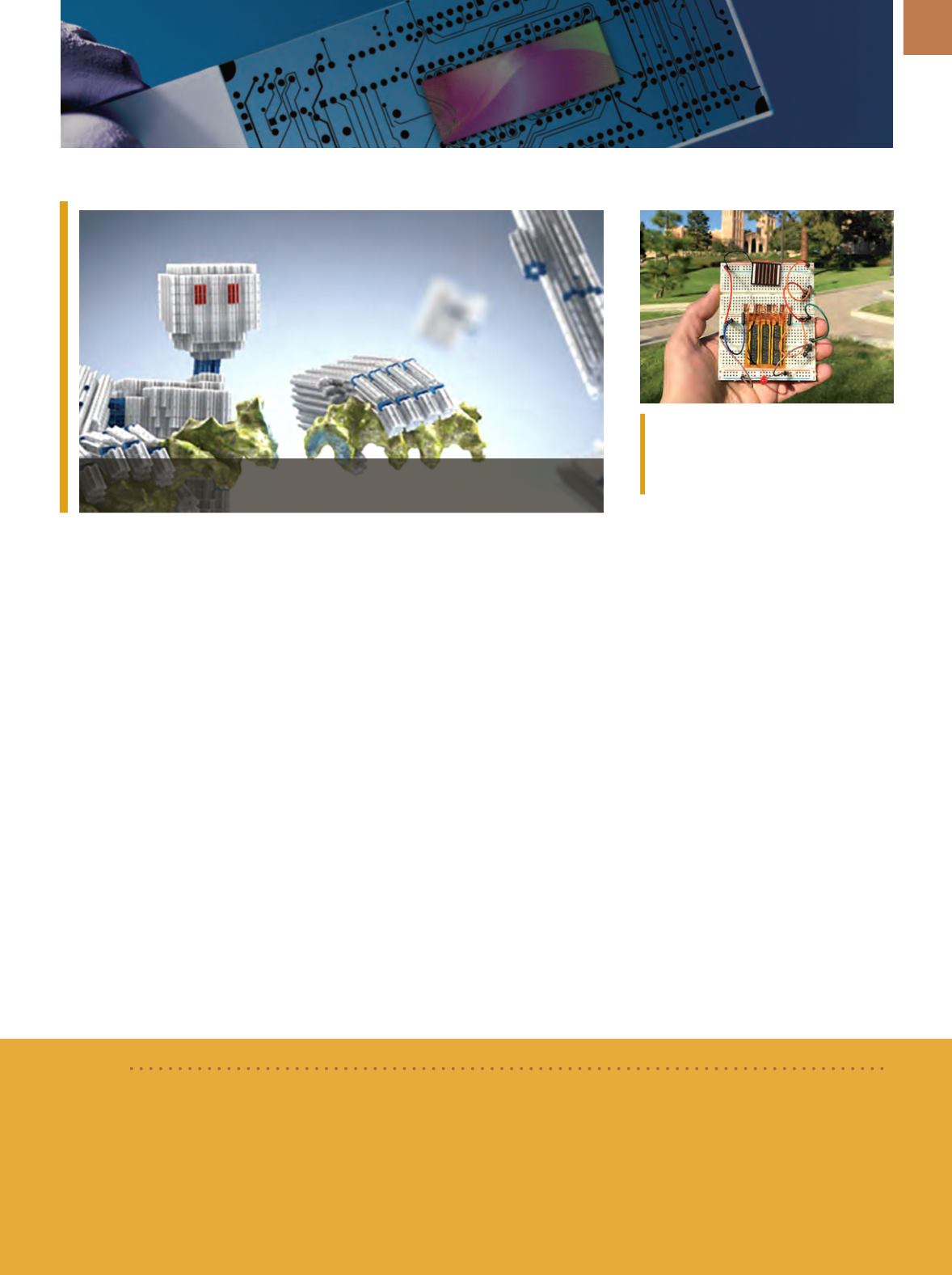

A D V A N C E D
M A T E R I A L S
&
P R O C E S S E S |
M A Y
2 0 1 5
1 5
NANOTECHNOLOGY
BRIEFS
Aleris, Cleveland, offers a new 7017 aluminum alloy in North America for commercial plate and defense
uses. After extensive review and testing, the U.S. Army Research Lab issued MIL-DTL-32505 for use in armor
applications. 7017 offers high strength, good weldability, and corrosion resistance. It is currently used in
Europe and Asia on combat vehicles to achieve superior ballistic protection.
aleris.com.
DNA ORIGAMI ENABLES
NANOMACHINERY
The latest DNA nanodevices cre-
ated at the Technische Universität
München (TUM), Germany, including a
robot with movable arms, a book that
opens and closes, and a switchable
gear may demonstrate a breakthrough
in the science of using DNA as a pro-
grammable building material for na-
noscale structures and machines. Re-
searchers developed a new approach
to joining and reconfiguring modular
3D building units, by snapping together
complementary shapes instead of zip-
ping together strings of base pairs. This
not only opens the way for practical
nanomachines with moving parts, but
also offers a toolkit that makes it easier
to program their self-assembly.
The field popularly known as
DNA
origami
is advancing quickly toward
practical applications, according to
Hendrik Dietz, professor at TUM. To
create a dynamic DNA nanomachine,
researchers first programmed self-
assembly of 3D building blocks that are
shaped to fit together. A weak, short-
ranged binding mechanism called nu-
cleobase stacking can then be activated
to snap these units in place. Dietz com-
pares it to building with children’s toys
like LEGOs, “You design the compo-
nents to be complementary, and that’s
it. No more fiddling with base-pair se-
quences to connect components.”
For
more information: Hendrik Dietz,
profes- sorenprofile@zv.tum.de,
www.tum.de/en.
QUICK-CHARGING SUPER-
CAPACITORS HOLD PROMISE
FOR STREET LIGHTING
A new hybrid supercapacitor de-
veloped at University of California, Los
Angeles, stores large amounts of ener-
gy, recharges quickly, and can last for
Artist’s impression of shape-complementary DNA components that self-assemble
into nanoscale machinery. Courtesy of C. Hohmann/NIM.
BRIEF
The Chancellor of the Exchequ r Georg Osborne officially opened the
Na ional Graphene Inst tute (NGI) at The
University of Manche ter,
UK. The NGI will en ble academia and industry to work id -by-side on future graphene
applications. More th n 35 companies from around the w rl have already ch sen to partner with the university to
work on graphene-related projects. The 7825 m
2
, fiv -story building features cutting-edge facilities and equipment to
create a world-class research hub. The NGI’s 1500 m
2
of clean room facilities is the largest academic space of its kind
for dedicated graphene research.
www.graphene.manchester.ac.uk.A hybrid supercapacitor developed at
UCLA stores large amounts of energy,
recharges quickly, and can last for more
than 10,000 recharge cycles.
more than 10,000 recharge cycles. The
dramatic rise of smartphones, tablets,
laptops, and other personal and por-
table electronics has brought battery
technology to the forefront of electron-
ics research. Even as devices have im-
proved by leaps and bounds, the slow
pace of battery development has held
back technological progress. Research-
ers at UCLA’s California NanoSystems
Institute have successfully combined
two nanomaterials to create a new en-
ergy storage medium that combines
the best qualities of batteries and
supercapacitors.
Researchers also created a micro-
supercapacitor that is small enough to
fit in wearable or implantable devices.
Just one-fifth the thickness of a sheet
of paper, it is capable of holding more
than twice as much charge as a typical
thin-film lithium battery.
For more infor-
mation: Richard Kaner,
rbk@chem.ucla. edu,
chemistry.ucla.edu.


















